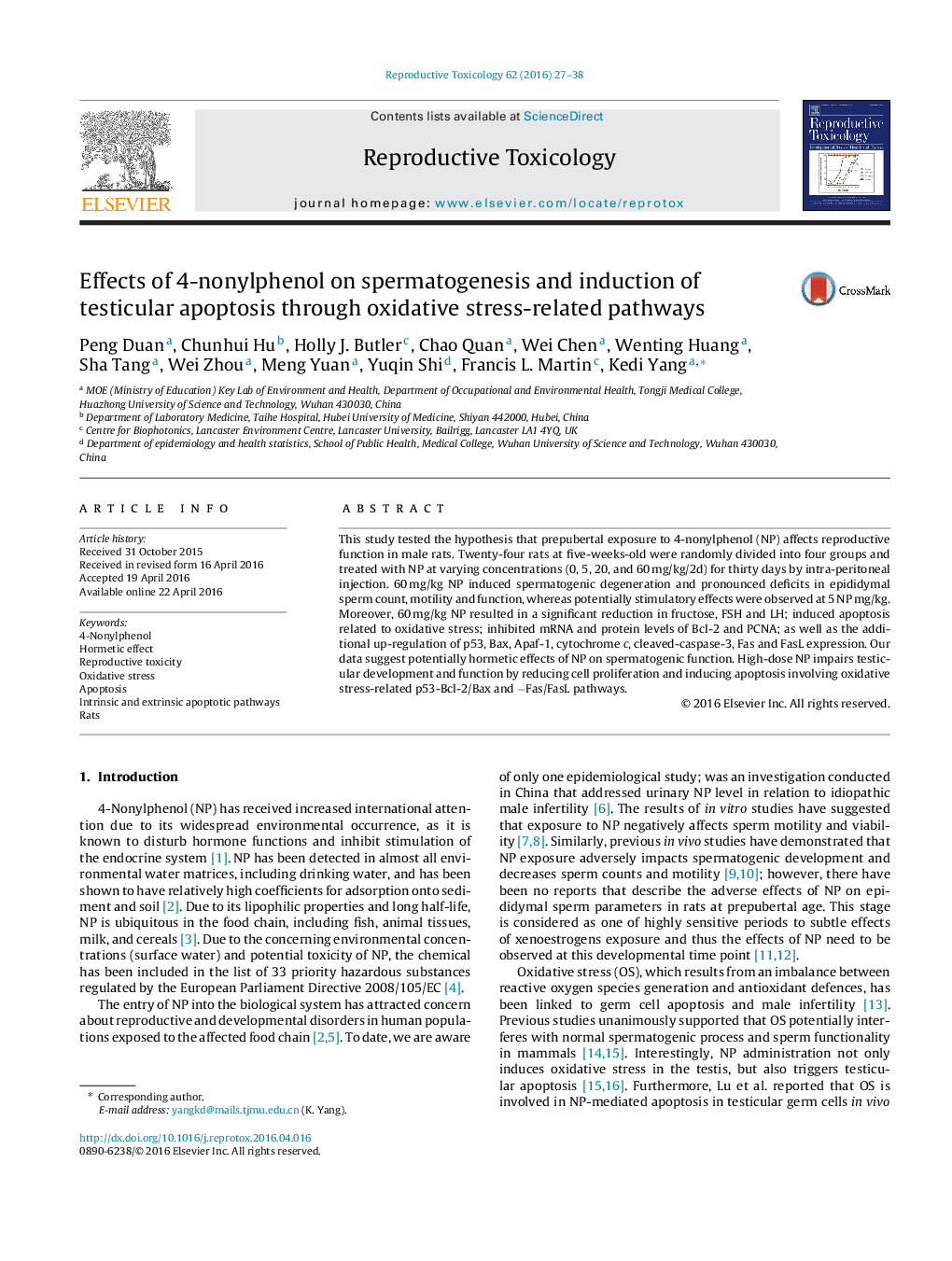| Article ID | Journal | Published Year | Pages | File Type |
|---|---|---|---|---|
| 5858015 | Reproductive Toxicology | 2016 | 12 Pages |
â¢Exposure to 4-nonylphenol induced hormetic dose-dependent changes in testicular structure and sperm parameters.â¢High-dose exposure of Sprague-Dawley rats to 4-nonylphenol exerted adverse effects on the male reproductive development and function.â¢Subacute exposure to 4-nonylphenol caused oxidative stress in testis and activated the p53-Bcl-2/Bax and âFas/FasL pathways, resulting in testicular apoptosis.
This study tested the hypothesis that prepubertal exposure to 4-nonylphenol (NP) affects reproductive function in male rats. Twenty-four rats at five-weeks-old were randomly divided into four groups and treated with NP at varying concentrations (0, 5, 20, and 60Â mg/kg/2d) for thirty days by intra-peritoneal injection. 60Â mg/kg NP induced spermatogenic degeneration and pronounced deficits in epididymal sperm count, motility and function, whereas potentially stimulatory effects were observed at 5 NPÂ mg/kg. Moreover, 60Â mg/kg NP resulted in a significant reduction in fructose, FSH and LH; induced apoptosis related to oxidative stress; inhibited mRNA and protein levels of Bcl-2 and PCNA; as well as the additional up-regulation of p53, Bax, Apaf-1, cytochrome c, cleaved-caspase-3, Fas and FasL expression. Our data suggest potentially hormetic effects of NP on spermatogenic function. High-dose NP impairs testicular development and function by reducing cell proliferation and inducing apoptosis involving oxidative stress-related p53-Bcl-2/Bax and âFas/FasL pathways.
